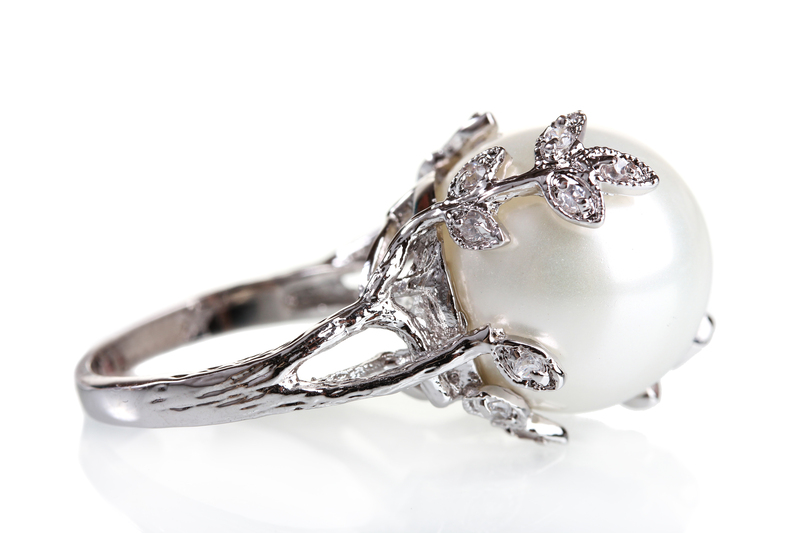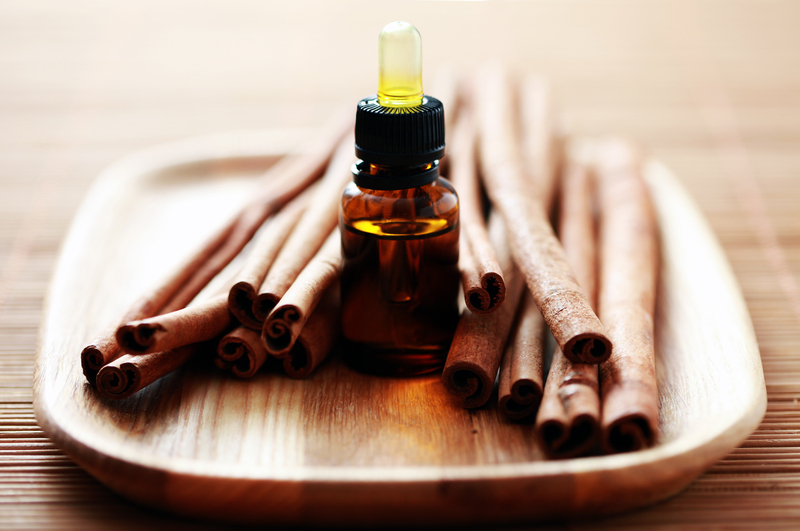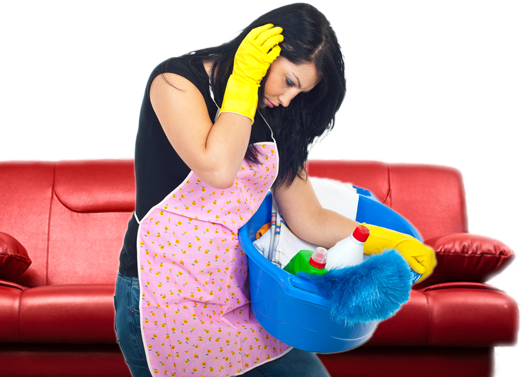Transformative Habits for an Allergen-Reduced, Dust-Free Home
Posted on 21/06/2025
Transformative Habits for an Allergen-Reduced, Dust-Free Home
Creating a truly clean space isn't just about sweeping up crumbs. A home free from allergens and persistent dust can transform your well-being and make your living environment more inviting. By adopting simple, practical habits, you can enjoy an allergen-reduced and almost dust-free home--every day.
Why Pursue an Allergen-Reduced, Dust-Free Home?
More than just a cleaning routine, adopting transformative habits for an allergen-reduced, dust-free home can vastly improve your health. Allergens like dust mites, pet dander, and pollen can trigger symptoms such as sneezing, congestion, and even asthma attacks. Persistent dust not only affects air quality but also gives your home a dull, uninviting appearance. By proactively tackling dust and allergens, you'll create a space that's comfortable, healthy, and easy to maintain.

Understanding Household Allergens and Dust
Household allergens come from a variety of sources. These include:
- Dust mites--tiny creatures that feed on dead skin cells.
- Pet dander--microscopic flecks of skin shed by cats, dogs, and other furry pets.
- Pollen--seasonal, but can enter the home through windows and clothing.
- Mold spores--thrive in damp areas.
- Household dust--a mixture of fibers, skin cells, dirt, and other fine particles.
Allergy triggers are often present even in the cleanest-looking rooms. That's why intentional, consistent habits make the difference.
Essential Transformative Habits for a Dust-Free, Allergen-Reduced Home
Below are effective strategies and dust-reducing routines to transform your home into an easy-breathing, healthy oasis.
1. Upgrade Your Cleaning Routine
- Dust with Microfiber Cloths: Microfiber grabs dust and allergens, unlike regular cloths that scatter particles.
- Work Top to Bottom: Begin dusting from higher shelves, letting particles settle before vacuuming floors.
- Vacuum Regularly: Vacuum carpets, rugs, and upholstered furniture at least twice weekly with a HEPA-filter vacuum.
- Mop Hard Floors: Don't rely just on sweeping. Mopping traps fine dust that sweeping leaves behind.
Set a consistent cleaning schedule--habit is the key to lasting change!
2. Declutter for Dust and Allergen Control
The fewer items you have out, the less surface area for dust to settle on. Embrace minimalism in high-traffic areas:
- Store unused items in closed cabinets.
- Choose easy-to-clean decor like glass, metal, or washable fabrics.
- Avoid heavy drapes and fabric wall hangings which harbor dust.
3. Optimize Air Quality In Every Room
Improving your indoor air quality is crucial for an allergen-free home. Consider these impactful habits:
- Use HEPA Air Purifiers: Place in bedrooms and living areas to capture airborne particles.
- Ventilate frequently: Open windows on low-pollen days to let in fresh air.
- Install and maintain exhaust fans in bathrooms and kitchens.
4. Mind Your Soft Surfaces
Fabrics and soft surfaces are magnets for dust and allergens. These strategies help:
- Wash Bedding Weekly: Launder sheets, pillowcases, and blankets in hot water to kill dust mites.
- Encase Pillows and Mattresses: Use hypoallergenic covers to block dust mites.
- Keep Stuffed Animals to a Minimum and wash those you keep regularly.
- Replace Carpets with hard flooring if possible, or use low-pile rugs that are easy to clean.
5. Pet Management in Allergy-Prone Homes
You can enjoy your furry companions while still achieving a dust-free, allergen-reduced home:
- Groom Pets Regularly: Outdoors if possible, using pet-friendly shampoos.
- Keep Pets Off Beds and Upholstery: Designate "pet-free zones."
- Vacuum pet bedding frequently and wash it on high heat weekly.
6. Humidity and Mold Prevention
High humidity invites dust mites and mold. Monitor and control humidity:
- Use Dehumidifiers in damp areas like basements.
- Fix leaks promptly to prevent mold growth.
- Keep house plants to a minimum and check for mold in soil.
7. Entryway Airlocks: Your Home's First Defense
Keep outdoor allergens from entering in the first place:
- Implement a 'No Shoes Indoors' Rule: Place a shoe rack and encourage the habit.
- Use doormats at every entry to trap dirt and pollen.
- Shake off jackets and bags outside before entering.
8. Laundering and Fabric Management
Dust clings to clothes, curtains, and linens. Improve your home's cleanliness by:
- Washing curtains, pillow covers, and throws every 1-2 months.
- Dry laundry thoroughly before bringing indoors to prevent mold spores.
- Opt for machine-washable textiles wherever possible.
Special Focus Areas: Where Allergens and Dust Hide Most
Some areas naturally collect more dust and allergens. Make these priority spots in your routine:
Bedrooms
- Wash bedding weekly; consider allergen-proof covers.
- Minimize clutter under the bed--use storage bins with lids.
- Keep windows closed during high-pollen times.
Living Rooms
- Vacuum carpets and upholstery frequently.
- Declutter shelves and surfaces--dust loves tchotchkes!
- Wipe remote controls, lamps, and electronics regularly.
Bathrooms and Kitchens
- Fix leaks immediately to prevent mold.
- Run exhaust fans during and after use.
- Launder bath mats and towels weekly.
Must-Have Tools for an Allergen-Reduced, Dust-Free Home
- Vacuum Cleaner with HEPA filter
- Microfiber dusting cloths and mops
- Allergen-proof bed and pillow encasements
- Dehumidifier
- HEPA air purifier
- Hypoallergenic cleaning sprays
- Lidded storage bins for under-bed or closet storage
Habits to Teach Your Household for a Lasting Clean Space
Keeping an allergen-reduced, dust-free home isn't a one-person job. Make these household habits:
- Set a cleaning calendar and assign tasks weekly.
- Encourage hand washing and changing clothes after returning from outside to reduce transfer of pollen and dust.
- Keep pets well-groomed and regularly wipe their paws after walks.
- Remind everyone to close doors and windows on high-pollen or windy days.
- Inspect for leaks or dampness as part of a monthly home check.
Addressing Common Misconceptions
-
"I can just use air fresheners."
Air fresheners mask odors but do nothing to remove underlying allergens or dust. Always prioritize cleaning and proper ventilation. -
"Pet dander only comes from fur."
Dander is actually flakes of skin and can persist long after sheds are cleaned. -
"All vacuum cleaners are the same."
HEPA filters are specially designed to trap ultra-fine allergen particles, far superior to standard vacuums.
Bonus: Natural Solutions for an Allergen-Reduced, Dust-Free Home
If you prefer to stay chemical-free, try these natural approaches:
- Baking soda for carpets: Sprinkle, let sit, then vacuum to neutralize odors and dust mites.
- White vinegar as a cleaner: Effective on windows, hard surfaces, and for mold control.
- Essential oils: Use tea tree or eucalyptus oil in DIY cleaning sprays to help deter dust mites.
- House plants like peace lilies or snake plants can help purify air, but avoid too many to prevent mold growth.

Maintaining Consistent Results: Turning Habits Into Lifestyle
Habit formation is the secret weapon in the fight against dust and allergens. Establish routines, automate reminders, and make cleaning as enjoyable as possible with music or podcasts. Involve the whole family and celebrate progress--maybe even treat yourself to a new plant or pillow for every cleaning milestone!
Conclusion: Your Journey to a Healthier Home
Adopting transformative habits for an allergen-reduced, dust-free home is not about perfection, but consistency. A cleaner, fresher home leads to better health, improved mood and a welcoming environment for guests and family alike. With the strategies above, you can breathe easy knowing you've built a dust-defying sanctuary.
Remember: The secret to a truly clean, allergy-friendly home is not what you do once, but what you do routinely.
Frequently Asked Questions
-
How often should I deep clean for allergens?
For best results, deep clean every 2-4 weeks, alongside ongoing daily and weekly habits. -
Do air purifiers really help with allergies and dust?
Yes--air purifiers with HEPA filters are proven to reduce airborne dust and allergen particles. -
Is it worth replacing carpets with hard flooring?
If allergies are severe, hard floors are far easier to keep dust-free and allergen-poor.
Start your own transformation with these habits today and enjoy the benefits of an allergen-reduced, dust-free home for years to come!




